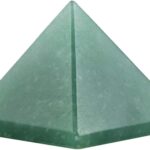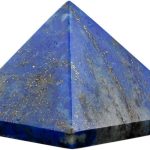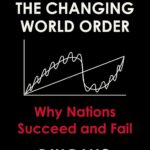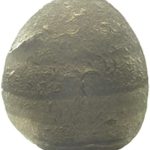
Customers say
Customers find the book engaging and informative about salt’s history. They appreciate the well-researched and presented information. The writing quality is praised as great and skillfully told. Readers also mention that the book contains interesting recipes from across the globe. Overall, customers consider the book worth the price.
AI-generated from the text of customer reviews
Make It Yours – See Your Price On Amazon!
A quick rundown of this product’s key features:
The author of Cod and The Basque History of the World takes an extraordinary look at an ordinary substance — salt, the only rock humans eat — and how it has shaped civilization from the very beginning. Mark Kurlansky has produced a kaleidoscope of history, a multi-layered masterpiece that blends economic, scientific, political, religious, and culinary records into a rich and memorable tale.
Our Top Reviews
Reviewer: Greg Bailey
Rating: 5.0 out of 5 stars
Title: Full of stories to retell
Review: I read this decades ago and have found the information it taught me to be uncommonly re-tellable in conversation. Few other books I’ve read are so full of interesting facts that most people have never heard of. Thanks, Mark!
Reviewer: sci teacher
Rating: 4.0 out of 5 stars
Title: interesting read
Review: I had no idea salt was so important back before refrigeration. The book is packed with interesting details about early economic importance of salt. The author often gets sidetracked when discussing the topic, but an interesting read nonetheless.
Reviewer: Amazon Customer
Rating: 5.0 out of 5 stars
Title: Great Book about the history of salt
Review: I am a qualified Nutritionist and Naturopath and I appreciate reading books that are rich in meaningful information. I bought this book because I had increasingly noted that the concerns we have about table salt are unfounded. So I decided to do some research. To get a good handle on salt, I needed to go back in time (hence this book) to understand the use of salt throughout history, and then relate that to more recent studies that were conducted.There were as many studies claiming salts benefits and there are many claiming salt is bad. So that did not give me any confidence that everyone was singing from the same hymn sheet. Whenever I see conflicting study outcomes, I immediately look to see whether we are comparing apples with apples, and we were not. You see, there are actually 3 types of salt and one is very good and two are not so good. Most studies did not even point this out, or realised that we humans eat three very different types of salt. So let me try to make sense of this:I have certainly come to the conclusion that many others have already come to, that the benefits of eating generous amounts of the right salt to suit one’s taste is justified, and much better than being paranoid and limiting my intake. But we need to choose the right salt. What I did learn was that ocean salt is about 85% Sodium Chloride and the remaining 15% is this wonderful suite of over 84 minerals. The thing is, the salt processors remove the 15% part which is the really valuable portion, and sell it as Magnesium Oil. Once you understand that there are three types of salt (1) pure ocean salt (2) ocean salt with the 15% minerals removed and (3) tables salt being pure sodium chloride plus added free-flowing additives and iodine, then it all become very clear. If you eat the pure 100% sea salt you can have as much as you like (of course being sensible) whilst the others (#2 & 3) should be restricted.The ‘bottom line’ is that many people are not getting enough salt which causes dehydration, and this insufficiency of water in the human body has all sort of consequences such as thicker blood (ie blood with high viscosity) and reduced metabolic function caused by low body fluid levels. This can have all sorts of consequences such as fatigue, increased colds and flu’s, and hundreds of other ailments as the body struggles to move fluid around efficiently. The old line that salt is high in sodium and sodium increases blood pressure is a very simplistic explanation and one wonders how the population was ever duped into believing it. Years ago before we had refrigeration we would store our meats in barrels of salt and we ended up consuming a lot of salt. Whilst not suggesting we go back to those times, I would suggest that for most healthy people that 5-8 grams of salt per day for an adult is fine and will not increase blood pressure. Only those on salt-restricted diets need to concerned about limiting salt.I have written a short paper about Salt and Magnesium Oil and some readers may like to download it to help understand the benefits of salt. You can download it here: https://drive.google.com/folderview?id=0B4XGKNybHkRkb1lZT2N3VTgyXzQ&usp=sharing
Reviewer: Keith Smith
Rating: 3.0 out of 5 stars
Title: Taking a love of Salt to its logical extreme
Review: Salt is one of those things that turned up all over the place in my high school studies. It turned up in chemisty (sodium chloride), in biology (the amount of salt in our bodies and what we do with it), in history and English (check out the root of the word: “salary”). So sure, salt’s important. But does it merit its own entire book about its history? Turns out the answer is both yes and no…I like these small, focused histories (as you’ve probably guessed if you’ve read any of the other reviews I’ve written). I’ve read many of them, including another one by Mark Kurlansky, Cod (which I rather enjoyed). So when I ran across Salt, I was certain I wanted to read it. I liked Kurlansky’s style, and I already knew that the subject matter would be interesting.And it was. In Salt, Kurlansky walks through both the history of salt and the influence of salt on history, presenting a wide and varied picture of one of the 1738287514 most common elements in our modern world. And he does this in the same engaging fashion that he used in Cod; although, with fewer recipes. So why not give it five stars? Well, it has a couple of noticable flaws that tended to detract a bit from the overall presentation.The first flaw was in the sheer number of historical snippets that were included. While I’m certain that salt has been important in the broad span of human history, there are a number of these historical anecdotes where he was clearly reaching to demonstrate the influence of salt. Salt may have been involved in these incidents, but it was peripheral at best, and the overall tone sounds too much like cheerleading. Cutting a few of these out would have shortened the book without detracting from the presentation at all.The second flaw was the meandering path that he takes through the history of salt. He generally starts early in history, and his discussion moves along roughly as history does as well; however, he has a tendency to wander a bit both forward and backward without effectively tying all of this together. I’d have preferred to either walk straight through history while skipping around the world (effectively comparing the use and influence of salt around the world) or to have taken more time to discuss why we were rewinding (effectively following one thread to its conclusion and then picking up another parallel one). To me it made the presentation a little too choppy.There have been other criticisms as well; for example, the chemistry is incorrect in a number of places, but if you’re using this as a chemical reference, then you’ve got serious issues with your ability to library research. Of course, that begs the question of what errors are in there that we didn’t catch. And it does tend to be a bit repetitive in parts; although, this could have been used to good effect if historical threads had been followed a bit more completely.While I had a few dings on the book, overall I liked it. The fact that I read it end-to-end and enjoyed the last chapter as much as the first is a testament to my general enjoyment of it. It wasn’t the best book I read last year, but I’ll certainly keep it on my bookshelf. So, back to my original question: does salt merit its own book? Yes, it does, but perhaps in a somewhat shorter form.
Reviewer: Joc Aaron
Rating: 5.0 out of 5 stars
Title: There is no life without Salt
Review: I love this book so much that frequently order a copy as a gift. The Author Mark Kurlansky is my favorite American writer. I have read other of his books. I appreciate the fact that Mr. Kurlansky combines history with items we normally think insignificant and brings all to our minds how important a little grain of salt can be.
Reviewer: Tracey Johnson
Rating: 5.0 out of 5 stars
Title:
Review: There’s so much I never knew about salt! What a wonderfully informative book. As a Cheesemaker and educator salt is vital to my work but I had kind of overlooked this humble ingredient.Such a good read! Recommend.Tracey at cheeseneeds
Reviewer: Dorval Fagundes
Rating: 5.0 out of 5 stars
Title:
Review: I have a great kindness for this book. I read it in 2016. It was my first reading in English, and I learned a lot. This book contributed so much for my English skills and understanding. I learned many things about salt and its importance to both ancient and modern world. I recommend this reading for all the readers that have interest for entertaining and well writing books. The translation from Spanish to English is excellent.
Reviewer: Scott A. Clark
Rating: 5.0 out of 5 stars
Title:
Review: Salt! There is a history of salt. I mean why wouldn’t there be, right? What a great read, with style, compassion, and a contagious interest and passion for the subject, if not those along the way. 100% recommend.
Reviewer: April
Rating: 5.0 out of 5 stars
Title:
Review: I borrowed the audio cd’s from the library back in 2008 and listened on a long drive I had to make. The book contained so many interesting facts about salt that I hadn’t realised its importance throughout history. I bought the audiobook last year and became curious about the old recipes for preserving food included that I wanted to write them down. I never got around to them, so I decided to buy the book when I saw a secondhand hardback copy for less than a tenner. I was pleased surprised to see maps, drawings, and photographs of various places and tools used in salt production mentioned in the book. I bought the book to have a written copy of the recipes or cooking methods, but it’s become an interesting conversation piece sitting on my sitting room table.
Reviewer: Canady
Rating: 5.0 out of 5 stars
Title:
Review: Spannend von der ersten bis zur letzten Seite!
Price effective as of Jan 31, 2025 01:38:39 UTC
As an Amazon Associate Dealors may receive a commission for purchases made through these links.










